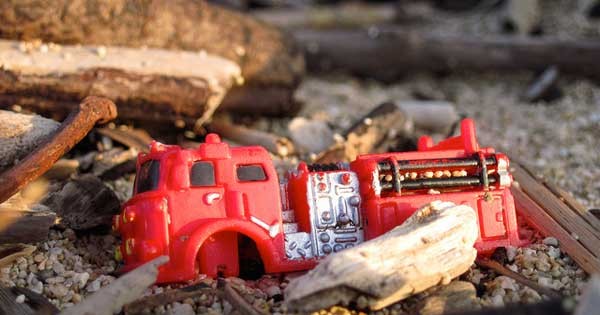
Consider the lugworm. It is a reddish-brownish sand-dwelling animal, segmented, bristly, and secretive. The lugworm, known in Latin as Arenicola marina, lives in mucus-lined, J-shaped burrows on the beach, from which it rarely emerges. It possesses the ability to regrow the tip of its tail, lizard-like, if snapped off by a bird. It eats sand—or rather the microorganisms and detritus present on the sand—and expels the rest as a slimy, cylindrical worm cast.
Or maybe you haven’t really considered the lugworm. It is not a charismatic creature—certainly no panda or koala—but it is ecologically important. By weight, lugworms constitute 32 percent of the animal life on some shorelines, where they constantly churn the sediments, aerating them and decomposing organic matter. Unfortunately, they’re also eating plastics. And not just plastics, but also the toxic chemicals and pollutants that plastics contain, chemicals that are making them sick.
Regular readers of this column may recall that I’ve written about the topic of microplastic marine pollution before. The subject deserves another look because of the ubiquity of plastics, our exposure to them, and how little we know about what the stuff is doing to us, our children, and wildlife.
Mark Anthony Browne, an ecologist at the University of California Santa Barbara, and his colleagues exposed lugworms to sand mixed with plastic litter fragments less than five millimeters in diameter. These particles form either as the breakdown products of larger plastics or are manufactured as “nurdles”—the stuff from which plastic items are made—or for use as cosmetic exfoliants—those “retexturing microbeads” in face creams and body lotions. On some beaches, microplastics form about three percent of the weight of the sand.
In Browne’s experiments, the microplastics also contained some common chemical pollutants that typically accumulate on discarded plastics: nonylphenol and phenanthrene (components of detergents and cigarette smoke); triclosan (an antimicrobial) and PBDE-47, a flame retardant. These pollutants amassed in the lugworms’ guts at levels between 326 percent and 3,770 percent greater than those in the original sand mixture. The nonylphenol (which comes from PVC) reduced the lugworms’ immunity to bacteria by more than 60 percent, and triclosan increased the worms’ mortality by more than 55 percent.
As Browne explained to me via email, PVC alone made the worms more than 30 percent more susceptible to “oxidative stress,” in which the body develops a reduced ability to battle a barrage of cell-ravaging molecules called oxygen free radicals. “Lugworms can suffer mass-mortalities during the summer, when toxic levels of hydrogen peroxide accumulate (causing oxidative stress) in their tissues through low tides on a sunny day,” he wrote. “We found that when lugworms eat micrometer-sized particles of PVC, it reduces the capacity of the worms to deal with this oxidative stress.”
Lugworms aside, should I worry that my three-year-old twins are surrounded by a plethora of plastic paraphernalia? The answer, says Browne, is yes. “Lugworms, like us, have an immune system that targets and immobilizes pathogenic bacteria,” he wrote. Chemicals in plastics make them likelier to get sick. The same may be true for us.

